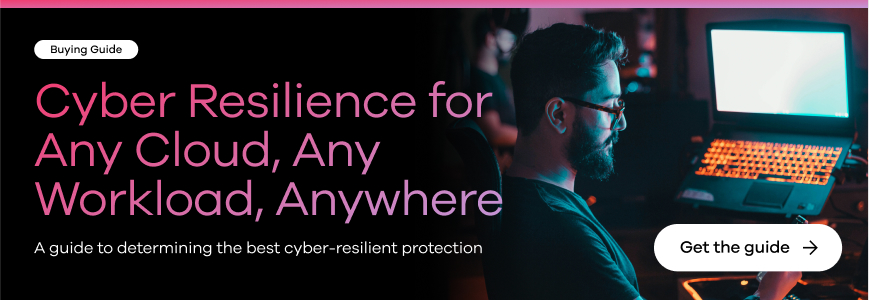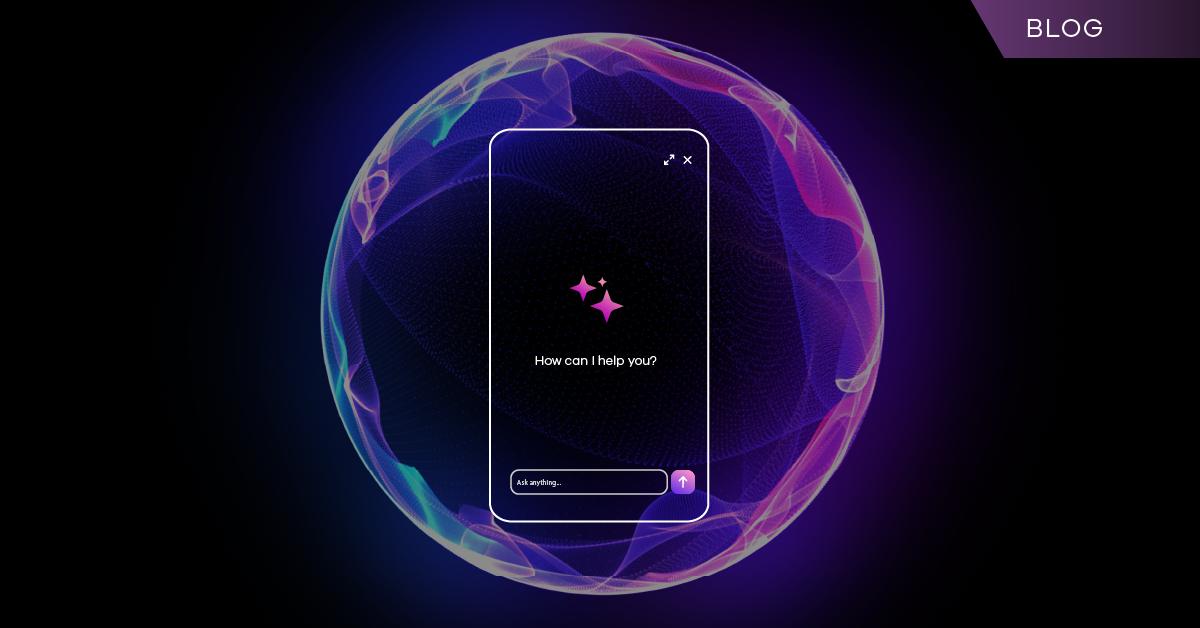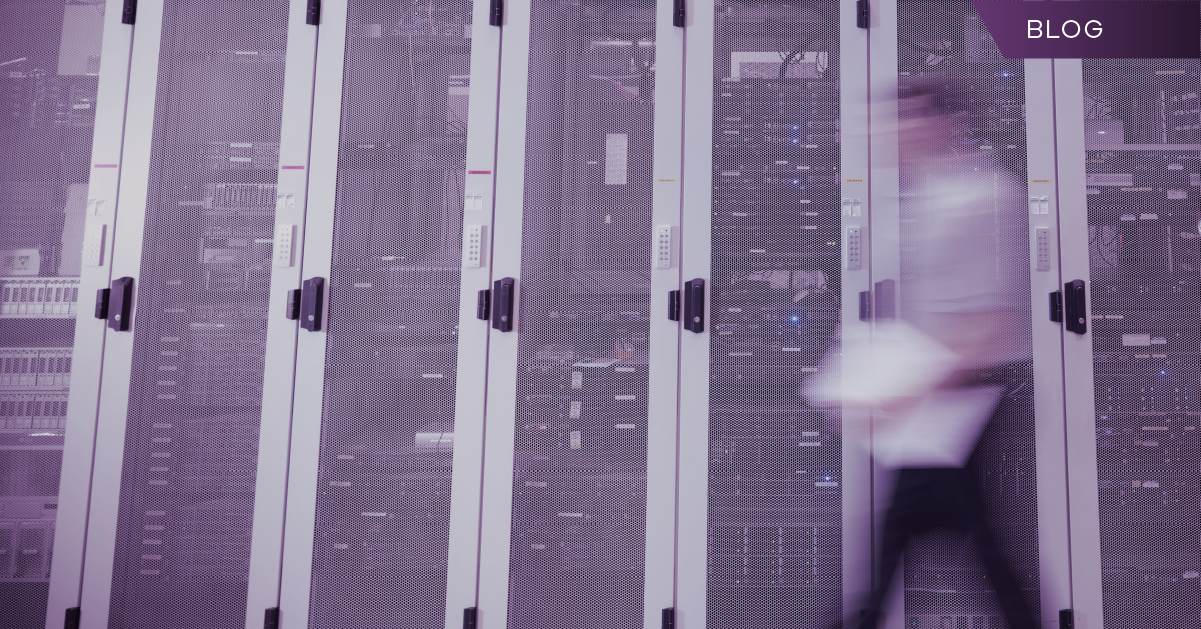Cyber and ransomware attacks are rising, but that’s not the only risk. Far too often, a company thinks data is secure, backed up, and recoverable — when it’s not. On top of that, organizations are creating unfathomable amounts of data distributed across clouds, regions, applications, and partners. This brings a complexity that poses a significant challenge to ensuring cyber resilience.
This blog post will guide you in safeguarding your company’s data across multiple clouds. We will cover topics such as avoiding bandwidth constraints during backup, implementing air gap ransomware protection, having the right cyber resilience plan, and making decisions in partnership with the broader business. We will also discuss the importance of staying alert with a multilayered approach to detection and response and having visibility into your cloud environment.

Avoid Bandwidth Constraints During Backup
Bandwidth constraints can be a significant challenge when backing up data to the cloud. Traditional backup methods can consume a large amount of bandwidth, slowing down other applications, and impacting productivity. However, there are several ways to avoid bandwidth constraints during backup.
One effective way to reduce bandwidth consumption is to use cyber resilience and data protection solutions with advanced deduplication and compression technology. These solutions can decrease the size of the data before it is sent across the network, which can significantly reduce bandwidth usage.
If you’re running a legacy backup product, this is one big reason to modernize your solution. Many legacy products need built-in deduplication and compression features, which can significantly slow down your backups. By modernizing your solution, you can take advantage of these features and improve your backup performance.
As you research different backup solutions, select a provider with proven network optimization as part of the underlying technology. Some solutions may offer bandwidth optimization but fail to deliver on this promise. Make sure to test the solution before you purchase it to ensure that it meets your needs.
Implement Air Gap Ransomware Protection
A cyberattack has hit you — now what? Air gap ransomware protection safeguards your company’s data across multiple clouds. SaaS-delivered protection can create secondary data copies in resilient, immutable, and isolated cloud storage. This approach ensures that data remains unchangeable, isolated, and swiftly retrievable in the unfortunate event of a ransomware attack.
Air gap ransomware protection provides an additional layer of security by creating a physical or logical separation between production data and backup data. This makes it more difficult for ransomware to spread to backups and ensures a clean copy of data is available for recovery.
Air gap ransomware protection is typically delivered as a SaaS solution that can protect both on-premises and multi-cloud data. This makes it a convenient and cost-effective way to protect your data from ransomware attacks.
Here are some additional tips for implementing air gap ransomware protection:
- Use a backup solution that supports air gap ransomware protection.
- Ensure that your backup data is stored in a geographically separate location from your production data.
- Encrypt your backup data both at rest and in transit.
- Regularly test your air gap ransomware protection solution to ensure it works properly.
- Educate your employees about ransomware and how to protect themselves from it.
You can help safeguard your company’s data from ransomware attacks and ensure that you have a clean copy of data available for recovery in the event of a disaster.
Have the Right Cyber Resilience Plan in Place
A comprehensive cyber resilience plan is essential for safeguarding your company’s data across multiple clouds. An effective plan ensures that your data is protected against various risks, including hardware failure, software corruption, human error, and ransomware attacks. Here are some key considerations when developing a robust cyber resilience plan:
- Define clear Recovery Point Objectives (RPO) and Recovery Time Objectives (RTO)
- Choose the proper backup storage
- Implement appropriate retention policies
- Regularly test your plan
- Use an intelligent configuration wizard
- Store backup data off-site
You can help safeguard company’s data across multiple clouds and ensure that you can quickly and easily recover your data in the event of a disaster.
Make Decisions in Partnership with the Broader Business
Making data protection decisions with the broader business ensures a holistic and practical approach to safeguarding your company’s data across multiple clouds. Firstly, confirming that the business understands the risks and costs associated with data loss is crucial. Educating stakeholders about the potential impact of data breaches, regulatory penalties, and reputational damage emphasizes the significance of data protection investments.
Secondly, backup parameters should be selected per compliance regulations and internal practices. Involving the business in decision-making processes around cyber resilience and data protection solutions guarantees alignment with organizational policies and legal requirements. This collaborative approach fosters a culture of shared responsibility for data security.
Lastly, aligning the cyber resilience and data protection solution with the business’s overall goals and objectives ensures these efforts directly contribute to the company’s success. Prioritizing cyber resilience initiatives that support strategic objectives, such as improving customer experience or expanding into new markets, demonstrates the value of data as a strategic asset.
By working with the broader business, you can ensure that your data protection strategy is effective and meets the organization’s needs. This will help to protect your company’s data from loss, theft, and unauthorized access.
Don’t Make Backup an Afterthought
Backups are often an afterthought, done only when necessary. But in today’s digital world, where data is essential to the success of any business, backups should be a critical part of your cyber resilience strategy to ensure business continuity.
Data loss can occur for various reasons, including hardware failure, software corruption, human error, and ransomware attacks. If you have a reliable backup, you could retain valuable data and experience significant downtime, saving your business time and money.
To avoid these risks, it’s essential to make data security and protection part of the planning process for all new applications. This includes identifying what data needs to be backed up, how often it is required, and where the backups will be stored. You should also invest in a reliable backup solution designed for hybrid clouds.
Engage Unified Management
Avoid using many tools and platforms that create overly complex cyber resilience interfaces. A solution that operates through a single-pane-of-glass dashboard protects all your workloads while your data security remains as efficient and comprehensive as possible.
A unified solution provides critical visibility with the ability to manage any data anywhere from one console. You can select SaaS and self-managed solutions if your strategy requires and still enjoy industry-leading technology. You get everything you need to modernize your cloud journey from a single vendor.
Stay Alert with a Multilayered Approach to Detection and Response
A multilayered approach to detection and response is crucial for staying alert to potential threats and safeguarding your company’s data across multiple clouds. This approach involves implementing advanced intelligence, threat detection, and early warning systems to identify and respond to security incidents proactively.
Advanced intelligence gathers and analyzes data from various sources, such as network traffic, endpoint activity, and user behavior, to detect suspicious patterns and activities. Threat detection systems use machine learning and artificial intelligence to identify known and emerging threats, enabling you to take immediate action to mitigate risks. Early warning systems provide real-time alerts and notifications when potential threats are detected, allowing you to respond swiftly and effectively.
By combining these layers of protection, you can stay ahead of potential data breaches and minimize the impact of security incidents. This comprehensive approach enhances your overall security posture and ensures the integrity and confidentiality of your company’s data across multiple cloud environments.
Be Cloud Ready
Being cloud-ready means having the proper infrastructure, processes, and skills to use cloud computing. Being cloud-ready is essential for businesses looking to safeguard their data across multiple clouds.
As companies face rapidly growing data sets and evolving technologies, traditional backup methods must be revised. If a company isn’t cloud-ready, its backups can slow down or stop working altogether as it struggles to handle more data, users, and diversified environments.
A cloud-based cyber resilience and data protection solution can help companies to be more agile and responsive to changing data needs. With a cloud-based solution, companies can:
- Scale their backups easily
- Back up data from multiple locations
- Protect data from disasters
- Recover data quickly
- Comply with regulations
By being cloud-ready, companies can take advantage of the many benefits of cloud computing and safeguard their data across multiple clouds. You won’t have to worry about rightsizing your infrastructure because the backup system is elastic. It shrinks or grows as your needs do and is easy to implement. Consider a SaaS backup and recovery solution to protect on-premises and cloud workloads.
In Summary
Deploying outdated strategies for data protection is an expensive mistake — and it’s not just about minimizing downtime for business continuity. Commvault’s unique platform capabilities are designed to help enterprises reduce costs by simplifying management, optimizing cloud strategies, reducing security risks, and improving business continuity.
With Commvault, you don’t have to sacrifice. With comprehensive coverage across on-prem, multi-cloud, SaaS, and edge data, Commvault Cloud delivers single-solution protection across your entire data estate.
Download the Free Buyers Guide to learn how to navigate the challenges of safeguarding your data.


